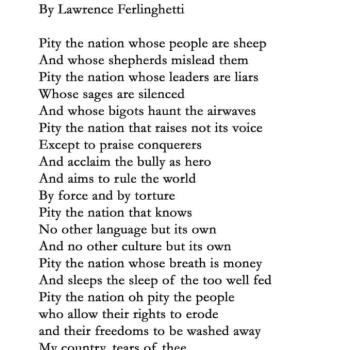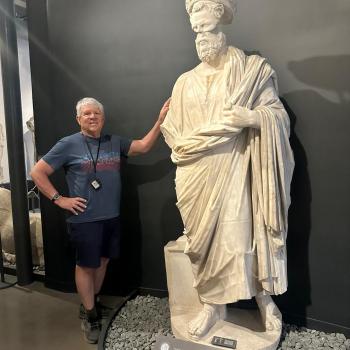If one is looking for natural theological signposts in a broken world, they will of course be broken signposts to the road forward, to where God wants things to go. Tom suggests in Chapter 7 various of these broken signposts, but not before offering the zinger: “the platonic eschatology of Western Christianity (‘souls going to heaven’) has generated a moralistic anthropology (‘my problem is sin’) which has then produced a pagan soteriology (‘God so hated the world that he killed Jesus) so that in order to retrieve the Biblical theology of the cross we need to unpick and rework each stage, not merely the final one. The problem comes when anthropology is reduced from vocation to ethics; from calling the behavior.” (p. 221). One could add that the NT insists that you cannot know or understand God without knowing the person of Jesus, as well as his work, which means a natural theology that excludes Jesus and the cross and the resurrection and the Gospel in general is doomed to failure.
As for the broken vocational signposts he lists justice, beauty, freedom, truth, power, spirituality, relationships. All these human concerns, passions, interests, desires motivating behavior are signposts towards the larger truths about God and love and the future. Particularly germane to our current political disaster in both the U.S. and U.K. is the following remarks: “We need truth and were made to tell truth but we live in a world of lies. Often enough we add to them ourselves. We even tell lies about telling lies (‘being economical with the truth’).” (p. 229). In fact I would say we are in a place politically where truth has ended up in a yard sale on the White House lawn, as it appears not to be useful to the inhabitants of that house.
And Tom is right “We have turned justice into oppression, beauty into kitsch, freedom into license, truth into fake news, power into bullying. We have turned spirituality into self-exploration or self-gratification. We have made the calling to relationships the excuse for exploitation. All these from a Christian point of view have the word ‘idolatry’ hanging over them.” (p. 235). So we are encouraged to read the signposts backwards and see that God has, is and will be establishing each of them upon the earth, including justice, the cry of the saints under the altar in heaven in Revelation. The cross becomes the hermeneutical key to understanding how God is and will bring these things about, and the cross also reveals how God is dealing with evil in the world.
“The three basic questions of ‘natural theology’– God’s action in the world, arguments for God from within the world, and the problem of evil–return to and are reshaped by the cross itself.” (p. 247).













